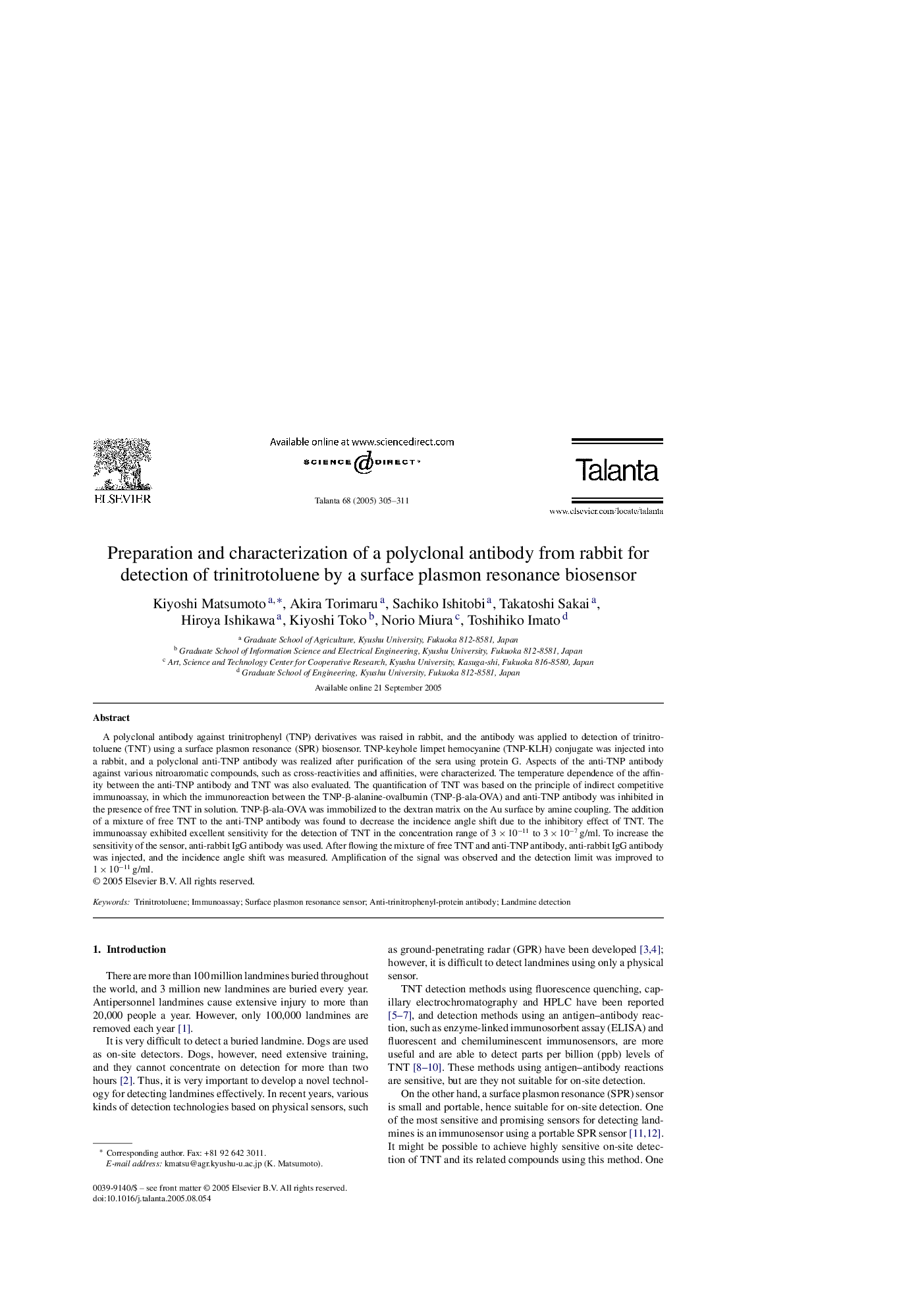| Article ID | Journal | Published Year | Pages | File Type |
|---|---|---|---|---|
| 10560998 | Talanta | 2005 | 7 Pages |
Abstract
A polyclonal antibody against trinitrophenyl (TNP) derivatives was raised in rabbit, and the antibody was applied to detection of trinitrotoluene (TNT) using a surface plasmon resonance (SPR) biosensor. TNP-keyhole limpet hemocyanine (TNP-KLH) conjugate was injected into a rabbit, and a polyclonal anti-TNP antibody was realized after purification of the sera using protein G. Aspects of the anti-TNP antibody against various nitroaromatic compounds, such as cross-reactivities and affinities, were characterized. The temperature dependence of the affinity between the anti-TNP antibody and TNT was also evaluated. The quantification of TNT was based on the principle of indirect competitive immunoassay, in which the immunoreaction between the TNP-β-alanine-ovalbumin (TNP-β-ala-OVA) and anti-TNP antibody was inhibited in the presence of free TNT in solution. TNP-β-ala-OVA was immobilized to the dextran matrix on the Au surface by amine coupling. The addition of a mixture of free TNT to the anti-TNP antibody was found to decrease the incidence angle shift due to the inhibitory effect of TNT. The immunoassay exhibited excellent sensitivity for the detection of TNT in the concentration range of 3 Ã 10â11 to 3 Ã 10â7 g/ml. To increase the sensitivity of the sensor, anti-rabbit IgG antibody was used. After flowing the mixture of free TNT and anti-TNP antibody, anti-rabbit IgG antibody was injected, and the incidence angle shift was measured. Amplification of the signal was observed and the detection limit was improved to 1 Ã 10â11 g/ml.
Related Topics
Physical Sciences and Engineering
Chemistry
Analytical Chemistry
Authors
Kiyoshi Matsumoto, Akira Torimaru, Sachiko Ishitobi, Takatoshi Sakai, Hiroya Ishikawa, Kiyoshi Toko, Norio Miura, Toshihiko Imato,
